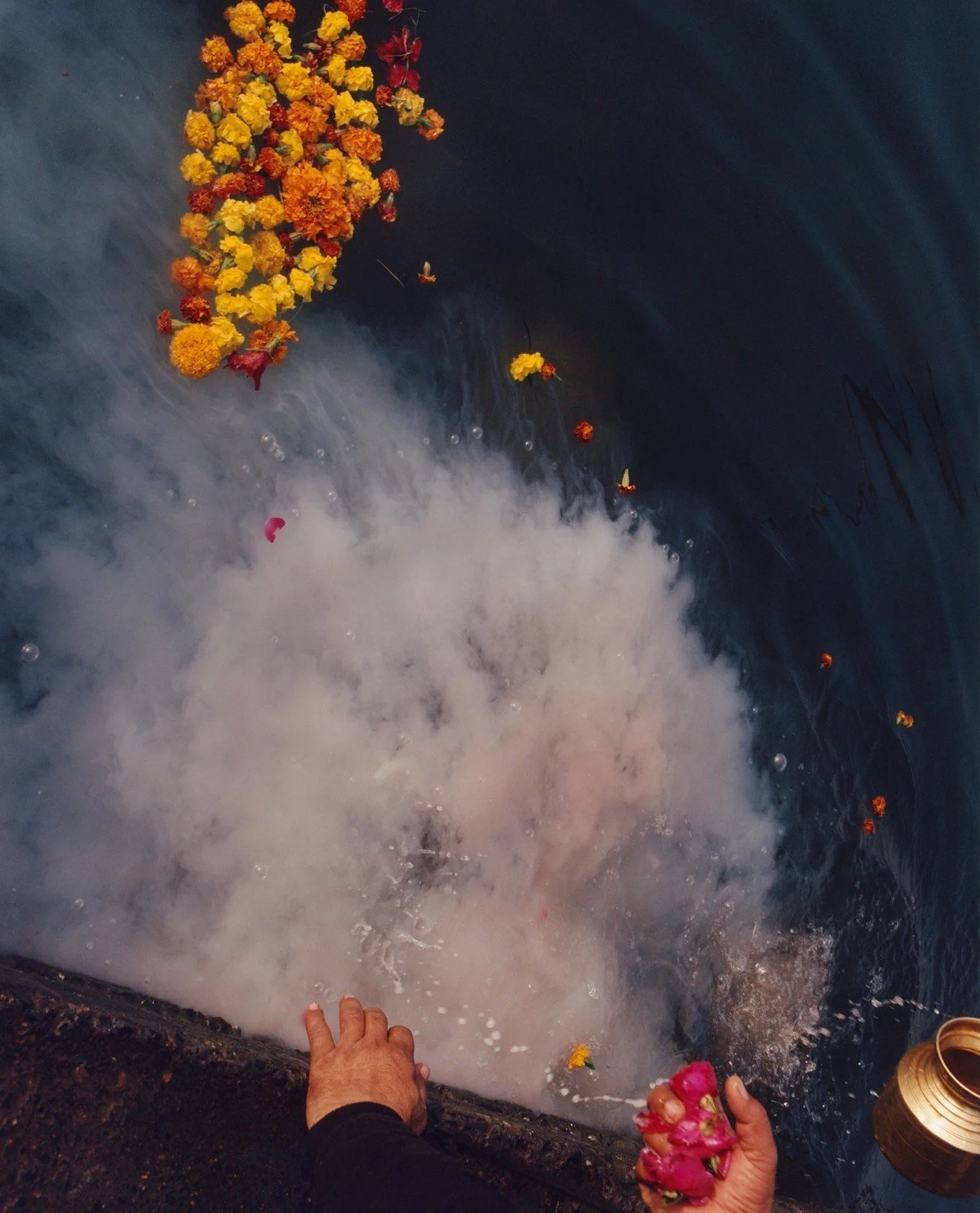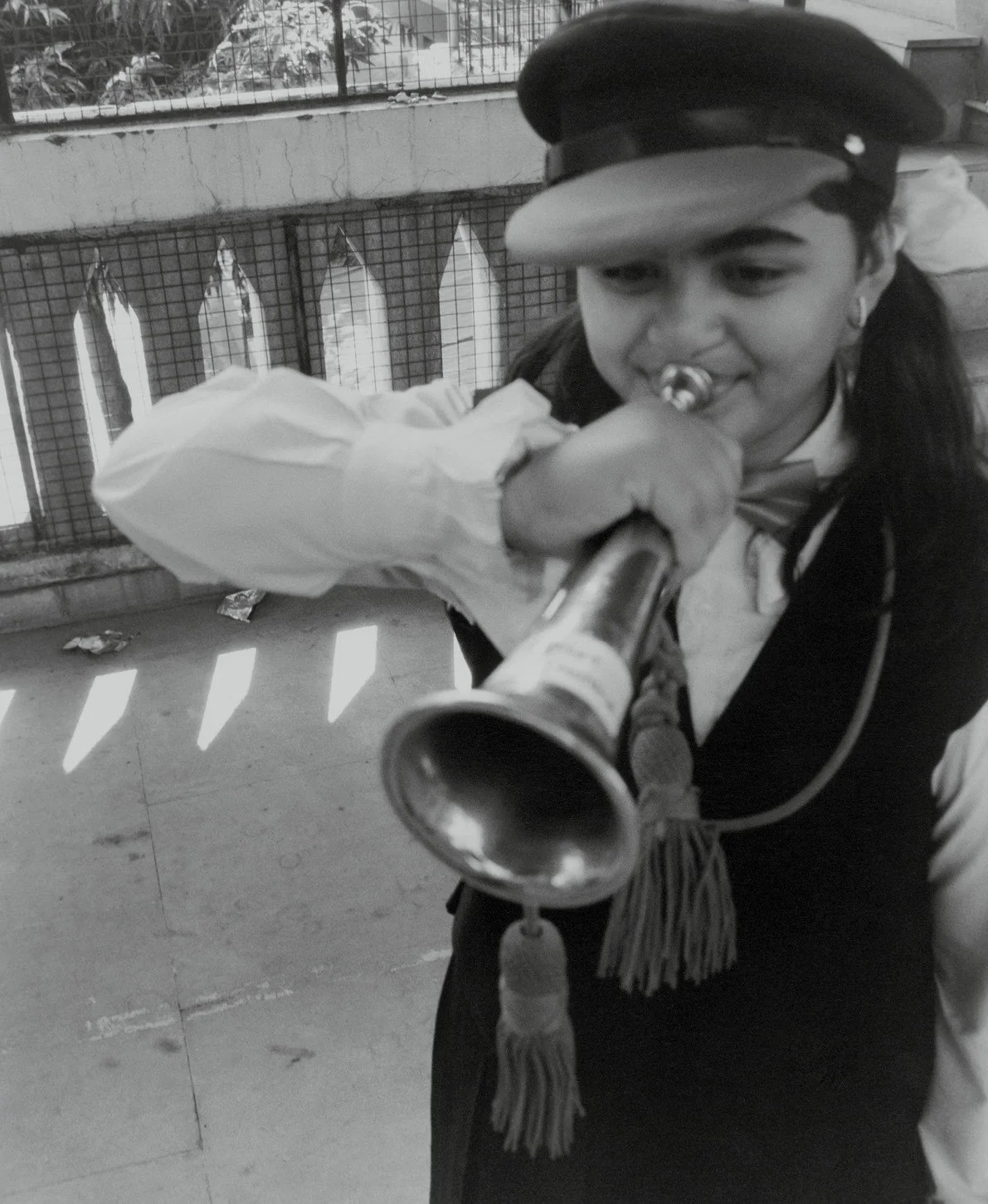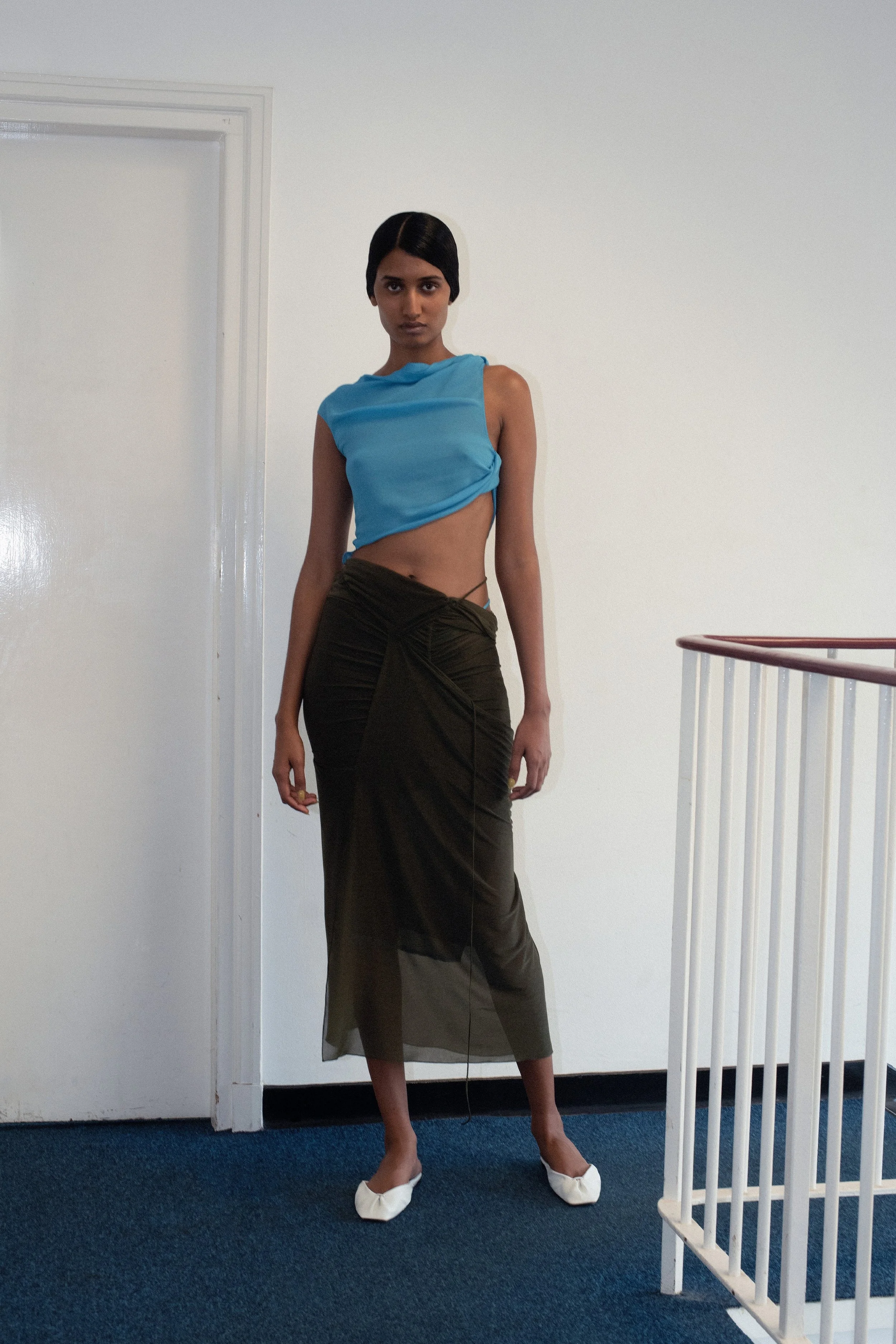Supriya Lele
© Supriya Lele
Article published in Naive MagazineInspired by the duality of her cultural identity, the work of Supriya Lele has captivated the fashion industry by showing how the intersections of the Indian and British cultures can build a genuine, modern and poetic universe that has a very sensitive approach of feminity.
Supriya Lele is a British-Indian designer who founded her eponymous fashion label in 2016. Her parents are from India’s central region — her father from Jabalpur and her mother from Nagpur —and they both worked as doctors. They moved to the United Kingdom before Lele was born and, although she spent part of her childhood in India and used to take yearly trips to visit their family there, she actually grew up in Meridien, a small village in West Midlans.
Lele was never a rule-following girl. Her very open-minded parents always encouraged her to follow her own interests and listen to herself. Therefore, during her teenage years, she experimented with her style, going through a gothic phase where she always wore black clothes, painted her room purple and was obsessed with Slayer and Black Sabbath.
She started studying architecture at the University of Edinburgh, but she found out that it was not for her. Since she loved the city and had many friends, she decided to take an art foundation course, where she realized she wanted to do something that involved working in 3D. Between sculpture and fashion, she opted for the latter, as something inside her told her it was the right decision. Her talent was so great that she was accepted in the master’s program at the Royal College of Art in London. Lele’s MA collection caught the eye of the Fashion East director Lulu Kennedy and, in 2017, she debuted her brand at London Fashion Week as part of the Fashion East showcase. Her collection featured a diverse casting and it already delivered a very clear message. The designer was both British and Asian and there was a strong dialogue between the two cultures, a dialogue capable of creating a hybrid and outstanding collection as that one. As the designer said, “It’s about being from one place but also another”.
It is Lele’s unique cross-cultural point of view that placed her among the candidates for the LVMH 2020 Award. She shared the final prize fund with the other seven finalists when the final leg of the competition was cancelled due to the COVID-19 pandemic. This also contributed to her exposure and further growth. For the future, the designer expects to grow steadily and sustainably and hopes to be able adapt to future challenges, both from a creative and business point of view.
Narmada
Supriya Lele’s unique vision led her to do something special to present her Fall/Winter 2020 collection. Instead of being part of the London Fashion Week, she decided to travel to the Jabalpur, in Madhya Pradesh, the homeland of his paternal family, and visit the Narmada River, where his father’s ashes were scattered. The Narmada — which means “someone who is endowed with happiness” — is a sacred river in central India that flows in a westerly direction through the states of Madhya Pradesh, Maharastra and Gujarat.
© Supriya Lele
Lele was accompanied by the renowned photographer and childhood friend Jamie Hawkesworth, who has worked on many occasions for the American, British and Italian editions of Vogue. His sharp eye and his great delicacy in photographing details managed to capture the essence of such a sacred moment. All the pictures were mostly shot in the early morning from 4am along the worshipped river and manage to encapsulate the essence of Lele’s multicultural work.
The designer felt a great inner peace when she saw her designs photographed in her ancestral home. The most important thing for her was to realize how all of her garments were extrapolable and fit flawlessly into that environment. Although her pieces are more daring than the traditional Indian attire, they still worked in that context. Hawkesworth took more than 200 photographs in Jabalpur, including a documentary series of teenage students at St Joseph’s Girls’ School.
Inspired by the experience, Lele and Hawkesworth created a photographic documentary of their journey and turned it into a beautiful book called Narmada. Published in November 2020, it is “a celebration of people, place and the next generation of Indian girls”. For the designer, it was special journey in many ways and helped the brand evolve. The essence of her work is the hybrid, the power of having multiple heritages, and every time she finds out more about her Indian side, the tension between the two elements shifts and reconfigures.
© Supriya Lele
Spring Summer 2021 Collection
Limitations can be liberating, and Supriya Lele’s Spring/Summer 2021 collection is a proof of that. Due to COVID-19 restrictions, the designer found herself working with deadstock fabrics and fitting all the clothes on her all-female team, a range of women of different shapes and sizes. At that moment, using only the essentials of her gear, she felt she was working from the heart of her brand.
This season the designer also explores her Indian heritage and mixes it with the 90s grunge, drawing a new conception of sexiness, which is manifested through attitude and not through patterns, escaping from the overt. Relaxed tailoring gives us a feeling of comfort, as if clothes could actually adapt to how we feel. One of the most characteristic details of the collection is an Indian print which was spray-painted onto garments by Will Bond, giving a rather rocker, heavy metal look. This contrasts with the presence of sequins and blue and pink fabrics, which give a touch of joy and optimism. Besides this particular features, the usual codes of Lele are still the protagonists, such as the dark colors, grunge tints and tight-fitting transparencies, which have become one of the most identifiable elements of the designer.
With only 14 looks, Supriya Lele makes her vision and ambition as a designer clear, bringing together all her nuances and internal contrasts harmoniously and poetically and showing the strength through which the two cultures come together to nourish the same universe.
© Supriya Lele




